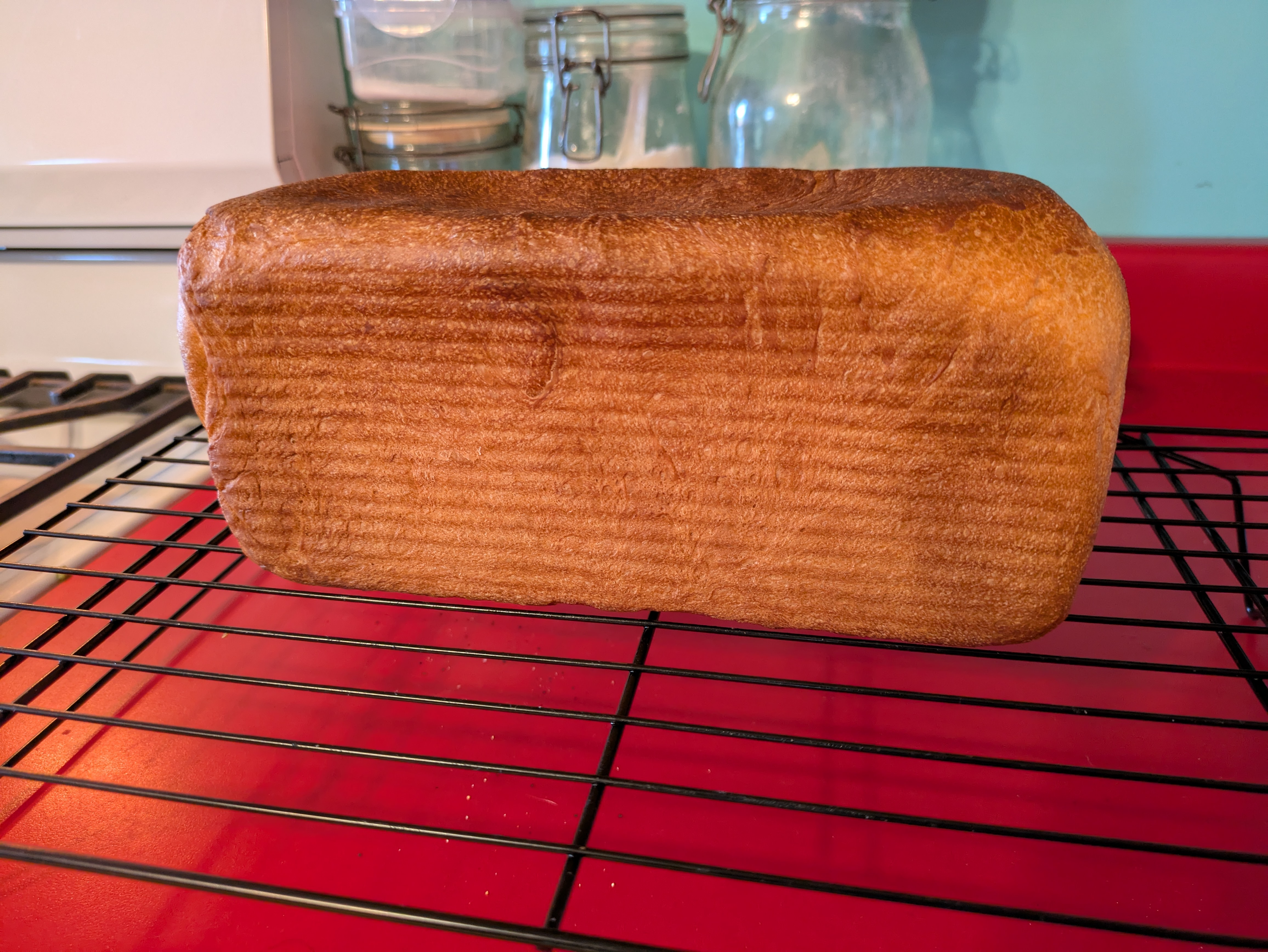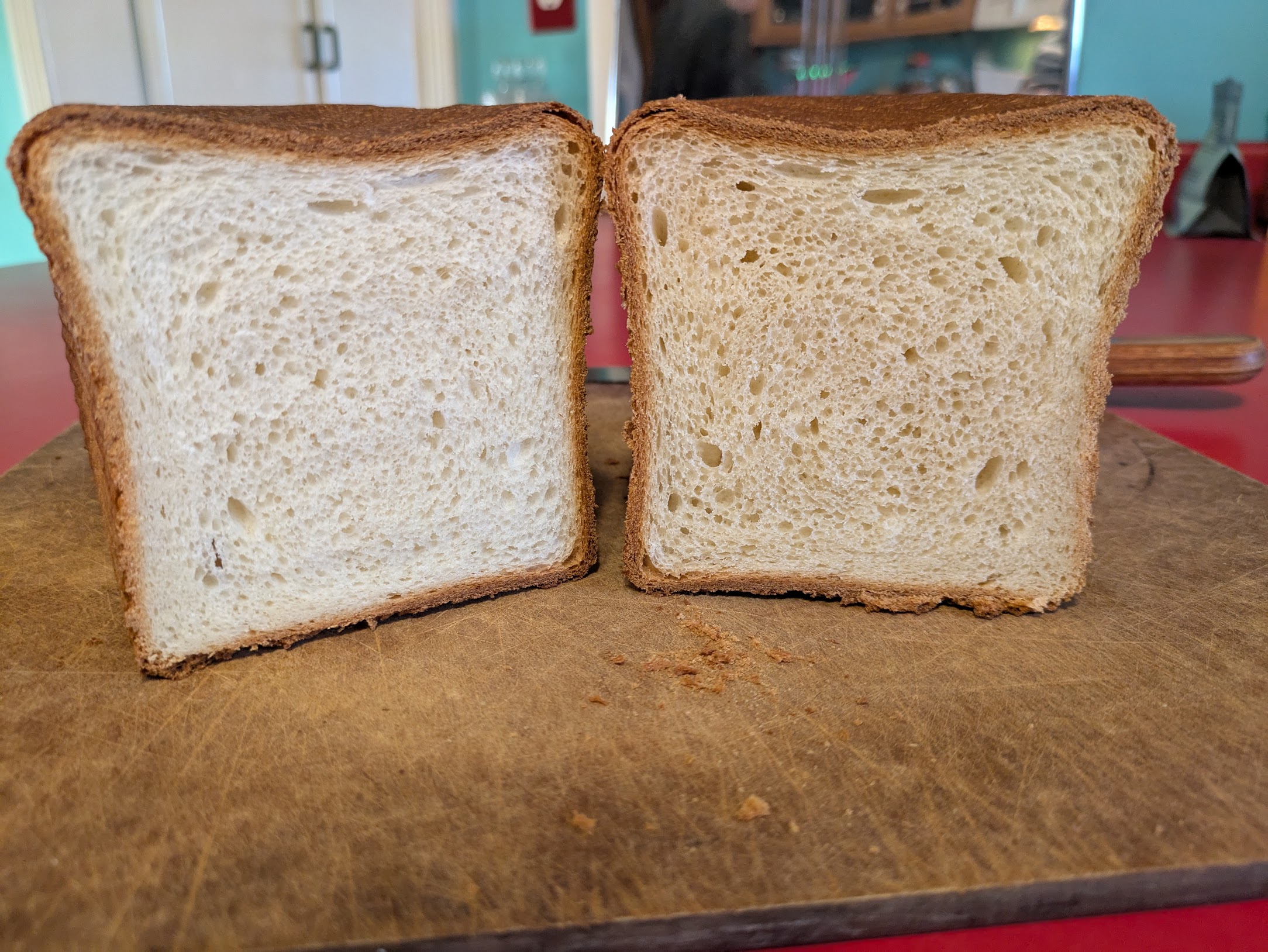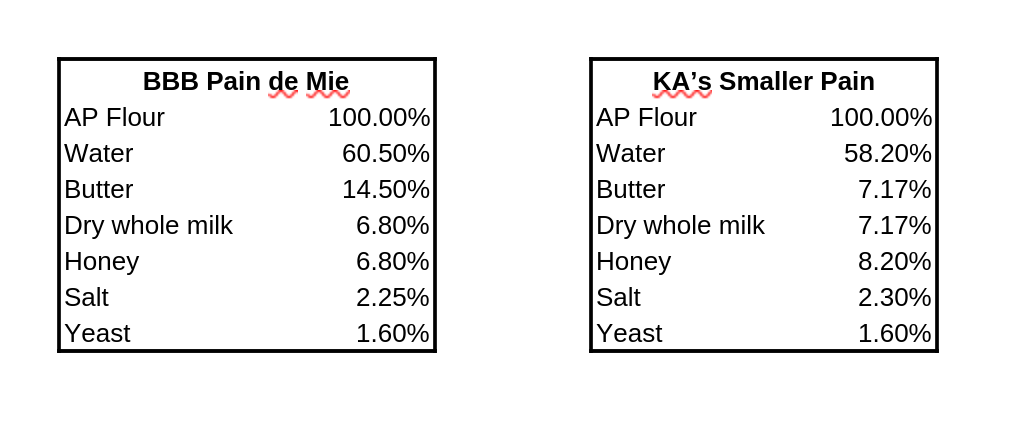Adapting RLB's Pain de Mie to a Smaller Pan (BBB #4)


Baked Monday, 2025-02-09.
If I’ve tried the Bread Bible Pain de Mie before, I don’t remember doing it. That’s probably because the first ever Pain de Mie I made was the King Arthur Smaller Pain de Mie, which is made for their smaller 9 x 4 x 4 pain de mie pan (as opposed to a traditional 13 x 4 x 4). That KA recipe is an absolute staple in our house: it’s virtually foolproof, pretty quick, and is perfect for a sweeter toasting bread.
But last weekend, I was looking for a bread that wouldn’t take much time, and lo and behold, RLB’s pain de mie has no proofing time… just a rise of about an hour and half! It’s also different enough in its formula from the KA recipe that I was curious to explore the difference in the loaves.
But the Bread Bible recipe is made for a much longer pullman loaf pan, a whopping 16 x 4 x 4. So if I wanted to try this loaf, I needed to slim it down.
Comparing the Recipes
Before adjusting for size, a quick comparison of the formula itself:
Both recipes use the same basic ingredients: all-purpose flour, dry milk, butter, honey, water, salt, yeast.

But as these bakers percentages show, there’s significantly more butter - almost double - and a touch more water in RLB’s recipe.
As for size, the total weight in grams for RLB’s recipe is about 1,127 g. The KA smaller pain de mie comes in around 720 g.
The KA loaf already comes out quite buttery and soft, so I was interested to see how the RLB loaf compares in both flavor and texture.
To put this together, I decided to make the full RLB recipe, but pull off a some excess dough to get the loaf size down to around 720 g. I experimented with using the extra dough for some cinnamon rolls.
But unfortunately, I didn’t think to adjust the time when using the smaller pan, and it definitely got dark. On a hearth loaf, that can be great. Here, it’s legit overbaked and left the loaf flavorful but a bit dry. I’m not sure the pictures above quite demonstrate that, but note how thick the crust is on the crumb shot.
The cinnamon rolls, which were mostly improvised, were about the same — and poorly shaped, to boot.
A few other notes for next time:
- I might put just a bit more dough the pan, maybe try around 780 g. Some sinking is normal in a pain de mie but I think this could have filled the pan more.
- Relatedly, instead of a single rise, I might do a short rise, then shape, then proof. Shaping this dough straight from the mixer to the pan was a challenge and, I think, contributed to its uneven shape in the final loaf.
Long story short: I’m not sure I got a good comparison here, and will need to try this recipe again soon. But it was a useful first step and still resulted in a tasty bread.